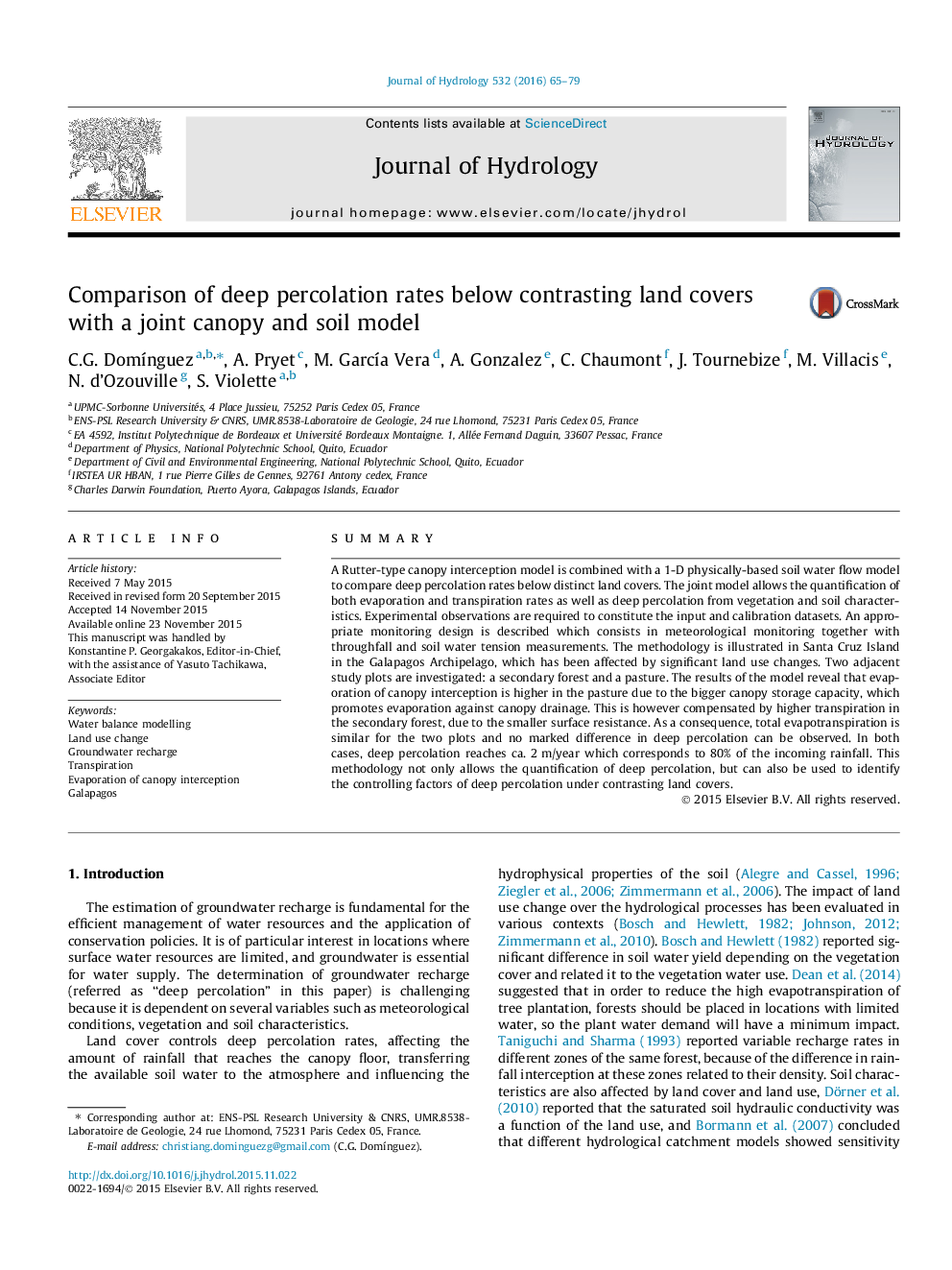| Article ID | Journal | Published Year | Pages | File Type |
|---|---|---|---|---|
| 4575902 | Journal of Hydrology | 2016 | 15 Pages |
•Use of a joint model with an experimental design at high time resolution.•We estimated and compared deep percolation of a forest and a pasture in Galapagos.•Evaporation of canopy interception and transpiration are contrasting at the forest and pasture.•Results show similar deep percolation rates at the forest and pasture (ca. 2 m/yr).•This methodology is used to identify the driving factors of deep percolation rates.
SummaryA Rutter-type canopy interception model is combined with a 1-D physically-based soil water flow model to compare deep percolation rates below distinct land covers. The joint model allows the quantification of both evaporation and transpiration rates as well as deep percolation from vegetation and soil characteristics. Experimental observations are required to constitute the input and calibration datasets. An appropriate monitoring design is described which consists in meteorological monitoring together with throughfall and soil water tension measurements. The methodology is illustrated in Santa Cruz Island in the Galapagos Archipelago, which has been affected by significant land use changes. Two adjacent study plots are investigated: a secondary forest and a pasture. The results of the model reveal that evaporation of canopy interception is higher in the pasture due to the bigger canopy storage capacity, which promotes evaporation against canopy drainage. This is however compensated by higher transpiration in the secondary forest, due to the smaller surface resistance. As a consequence, total evapotranspiration is similar for the two plots and no marked difference in deep percolation can be observed. In both cases, deep percolation reaches ca. 2 m/year which corresponds to 80% of the incoming rainfall. This methodology not only allows the quantification of deep percolation, but can also be used to identify the controlling factors of deep percolation under contrasting land covers.
